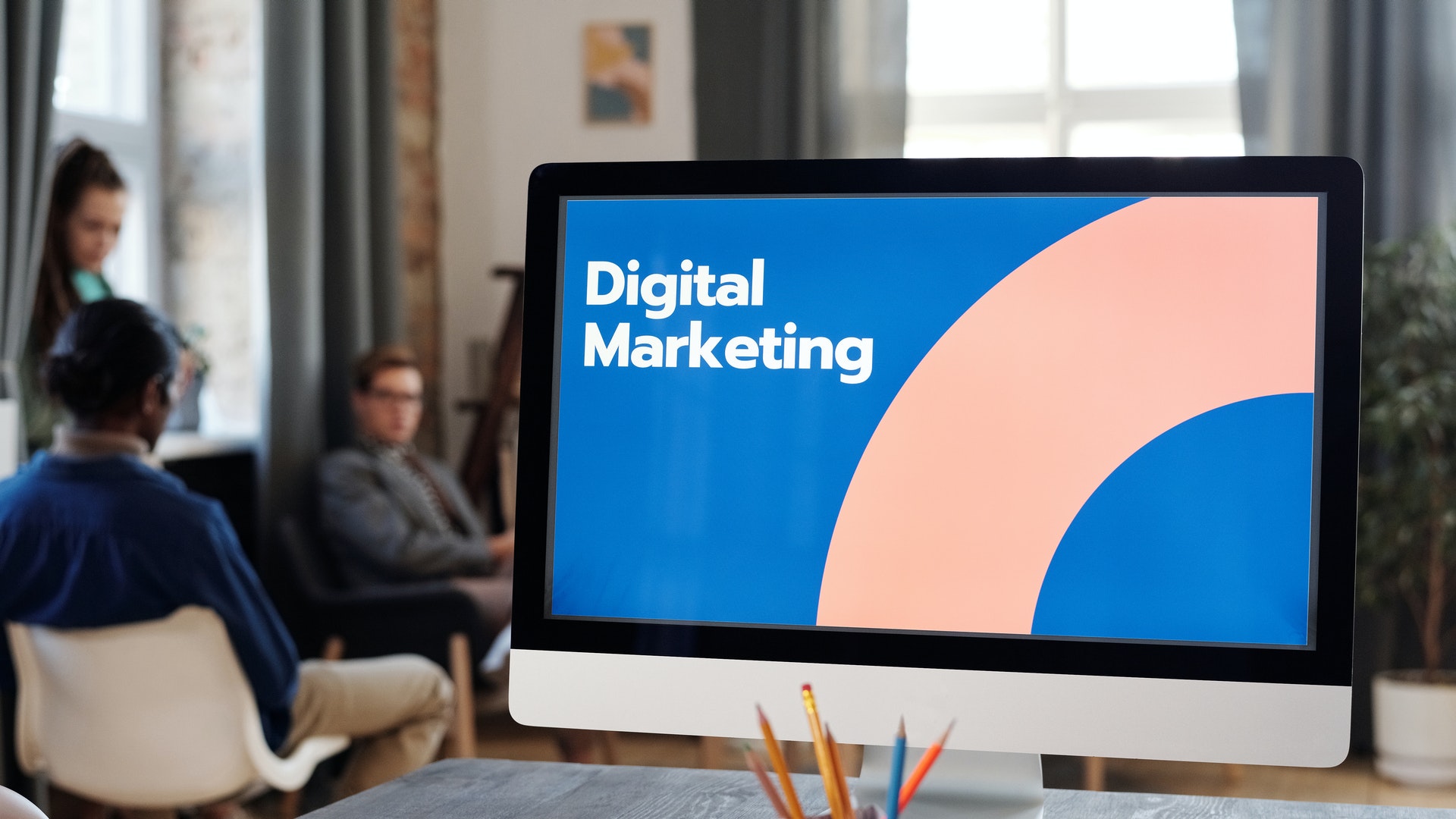Six small business marketing strategies that work
The top small business marketing strategies to adopt

You have so many options when it comes to small business marketing strategies that it's hard to know where to start. You need some solid and proven plans, from understanding your customers to sharing the benefits of your products and services, and to utilize services such as the best CRM software to manage your plans.
Fortunately, when it comes to getting your message across, there are several reliable strategies that will bring everything into focus. Whether you're new to marketing and creating your approach for the first time, or you want to refine your messaging and tactics, we'll share some strategies to optimize your time, energy, and budget.
You'll probably want to run through these step-by-step, as each marketing strategy builds on the one before it. This will help you to enhance your approach and maximize your return on investment.
The small business marketing strategies that we'll cover are:
- Clearly define and understand who your ideal customers are.
- Outline your product values and benefits, and align your products with your customers' needs.
- Discover the best marketing channels for reaching your customers.
- Create marketing and content that will resonate with your customers.
- Execute your marketing campaign.
- Track what's working and tweak as necessary.
We'll also cover some of the best marketing software and tools to help you streamline and optimize your marketing efforts.
Marketing strategy 1: Clearly define who your ideal customers are

In small business marketing, this is the foundation of everything else you do. You've probably been told that knowing your customer is half the battle when it comes to making sales. But what does knowing your customer really mean?
Your ideal customers are those that are most likely to buy your products and services. That means developing "ideal customer profiles", and to do that you'll need to ask some questions.
Sign up for breaking news, reviews, opinion, top tech deals, and more.
You can start with key demographics. This might include their age, marital status, occupation, geography, financial status, and other factors. Helpful questions include:
- Who are they?
- Where do they live?
- What do they believe in?
- How do they spend their days?
- What is important to them?
- What kind of things are they looking for?
- What are their behaviors?
- How do they make decisions?
Segment your ideal customers into different audiences
You can develop multiple profiles for your ideal customers. You will want to "segment" these ideal customer profiles into different audiences, so that you can develop a customized marketing approach for each one.
For example, you might want to group business customers into:
- People working at businesses of specific sizes
- Professionals in certain industries and niches
- Roles at different levels of seniority
You might split individual consumers into:
- Whether someone is a parent or not
- Do they own or rent their home
- Where are they most likely to shop
Your segmentation depends on the type of business you run, the products and services you sell, and how your offerings meet customer needs.
The best marketing software and tools to understand and segment your ideal customers
- Social media analytics on Facebook, Instagram, Twitter, LinkedIn, and similar platforms
- Marketing reports from companies like IBISworld, Ciense, or Mintel
- CRM software, so you can gather profile information about existing leads and customers
Marketing strategy 2: Outline your product values and benefits

You have to connect with your ideal customers on an emotional level. That means building up a relationship with your business and brand through the products you sell. To do that, you'll need to know what your product values and benefits are.
A product value is something your product does for people. It's the problem it solves, the need it meets, or the experience it creates. A benefit is what your customer will gain when they purchase or use your product. It's the reason why they choose your products over your competitors’ offerings.
To determine what those values and benefits are, ask yourself:
- What do customers get from my products?
- What makes my product unique?
- Why can't a competitor offer this to these customers?
- How do they receive value from my product?
- What type of experience does my product give people?
Refer to the ideal customer profiles you created earlier to help answer these questions.
Once you've defined your product values, tie each of them back to your ideal customer profiles. Identify the key needs or problems that each profile has, and show how your product can benefit that customer.
These benefits will become the core of your marketing messages. They will let the customer know that "you get it", and that you've designed products and services that can meet their needs.
Marketing strategy 3: Discover the best marketing channels for reaching your customers

You need to reach your customers where they are, and use the right channels and messaging formats to grab attention. We've previously explored marketing channels in our Marketing 101 guide to the basics. Here's a refresher of the main online marketing channels, and how to use them.
- Pay-per-click (PPC) advertising: Shows ads for your products and services when people type related keywords into a search engine. PPC guides people to your small business website if they're searching for areas related to your business offerings.
- Display advertising: Displays text and video ads across different websites in similar areas to your business. Display advertising is great for attracting people who may be browsing related areas on other sites.
- Social media marketing: Inserts ads into people's feeds across social media networks like Facebook, Instagram, Twitter, and LinkedIn. Because people spend so much time on social media, this can be a helpful way to reach them.
- Content marketing and SEO: Creates content for your website and other channels so that you rank highly in organic search results. Content marketing is useful if you're publishing helpful information and educational material for customers.
- Email marketing: Markets to people who have signed up for your email list. Email marketing lets you share messages that offer helpful advice, different perspectives, interesting research, and other formats.
Go through your ideal customer profiles and identify the most appropriate channels and types of messages for each one. From there, you can craft specific small business marketing strategies based on each channel, profile, and product benefit.
- PPC: Google Adwords and Google Analytics
- Display advertising: Google AdSense, Google Analytics, HubSpot Ad Management Software, AdRoll, RollWorks, and Adstream
- Social media marketing: Hootsuite, Buffer, and Sprout Social
- Content marketing and SEO: Google Search Console, Google Analytics, HubSpot, AHRefs, and SEMRush
- Email marketing: Mailchimp, CovertKit, GetResponse, and AWeber
Marketing strategy 4: Create marketing and content that will resonate with your customers

Once you've sorted through your ideal customer profiles, product benefits, and marketing channels, it's time to create the messaging itself. You may want to focus on:
- Messages that clearly identify a customer's pain points, but talk about them in a positive way
- Messages that show the features and benefits of your products and services, and how they can solve customer problems
- Messages that avoid too many assumptions about what your products can do for people; be realistic, and stay focused on one feature, benefit, or customer need for each message
- A tone of voice that matches the specific marketing channels you're using, and shows you really understand your customers
- A context for the messages that customers can identify with immediately
- A messaging format that fits with the marketing channels you're using
- A cohesive story that ties all the messaging together, and creates a perception of your brand as an expert
When you're done, show your messages to a small group of customers and ask for feedback. You may find that they react better to some messaging than others, which will give you insight into what resonates most with them.
Marketing strategy 5: Execute your marketing campaign

We've already completed a lot of the work needed to run a successful campaign:
- You understand who your customers are through the ideal customer profiles
- You know the specific product benefits and features that will connect with customer needs
- You've identified the best channels to reach your customers where they are
- You've created some powerful and persuasive marketing messages
There are only a few areas left to cover: now, decide how much you want to spend on your small business marketing. You can split this budget between different campaigns and marketing channels. Then, list out:
- The specific customer profile you want to reach with this campaign
- The particular messages that will connect with that customer
- The channels you will use to deliver those messages
- The timeline for when you're going to send those messages
That's it, your small business marketing plan is complete. Time to go do!
The best marketing campaign software and tools
Now, you just need to bring it all together with the right marketing software and tools. We recommend:
- HubSpot offers a comprehensive suite of small business marketing features that include lead tracking and management, blogging, and website analytics. It also offers email and mobile marketing options.
- Marketo provides small businesses with features like lead generation, customer relationship management, digital media management, as well as social media integration.
- Eloqua combines campaign management with lead nurturing to provide small businesses with a fully-integrated small business customer acquisition solution.
Each of these tools comes with comprehensive training and user guides, so you can pick the right one for your marketing needs.
Marketing strategy 6: Track what's working and tweak as necessary

You've started executing your small business marketing campaign, but you're not done yet. Now it's time to track the results, and make changes where needed.
Make sure you get good marketing metrics in place, for example:
- Social media followers
- Website visits
- Interest and leads
- Conversions and sales
- Revenue and profits
- Marketing campaign return on investment (ROI)
You should split these metrics in various ways—by marketing channel, customer persona, type of message, and other segmentation. See if they can answer questions like:
- What small business marketing channels are working best?
- What small business marketing strategies are working best?
- Who is converting?
- What messaging resonates most with your customers?
- Are you reaching them on the right digital platforms?
These metrics will let you know what's working and what's not. You can use this insight to make changes. Then, track how those changes impact your revenue and conversions and tweak further as needed. This will let you optimize your marketing strategies, maximizing your ROI.
We hope this has been helpful. In this guide, we’ve covered the small business marketing strategies at the core of a successful campaign. You understand who your customers are through ideal customer profiles; you've defined how your products will help; and you know how to reach your customers through the messages and channels that connect with their needs.
Now, it's time. Start with these small business marketing strategies, and you'll build the right foundations for business success.
Further reading on marketing
If you want to learn more about marketing, including how you can automate marketing functions between businesses or just in general, make sure to read our explainers answering the questions: what is digital marketing; what is marketing automation; and what is B2B marketing automation.

Paul is a professional writer who creates extensively researched, expert, in-depth guides across business, finance, and technology. He loves the challenge of taking complex subjects and breaking them down so they are easy to understand. He can quote 'The Princess Bride' in its entirety and believes the secret to good writing is Earl Grey tea.